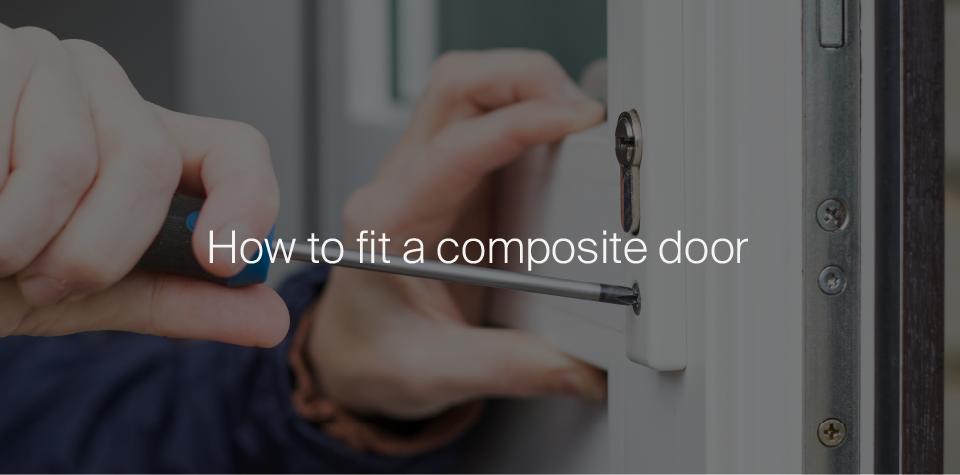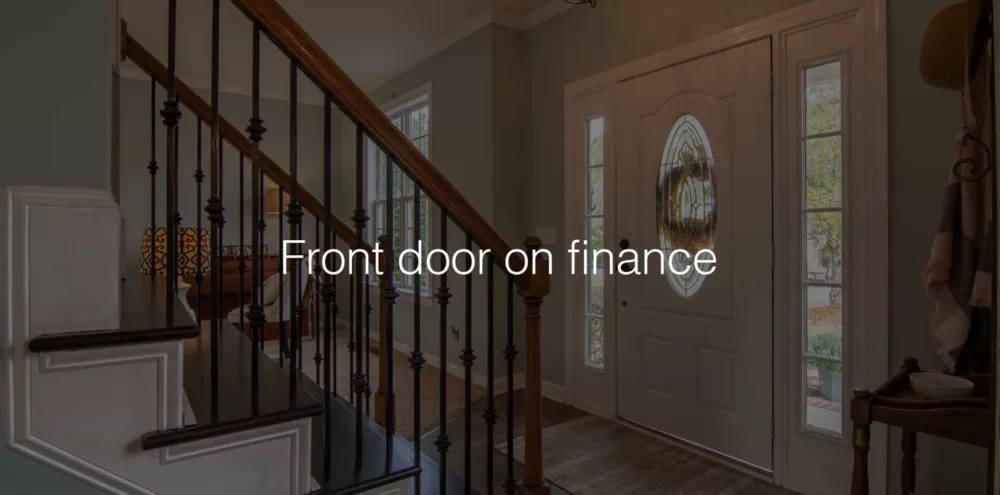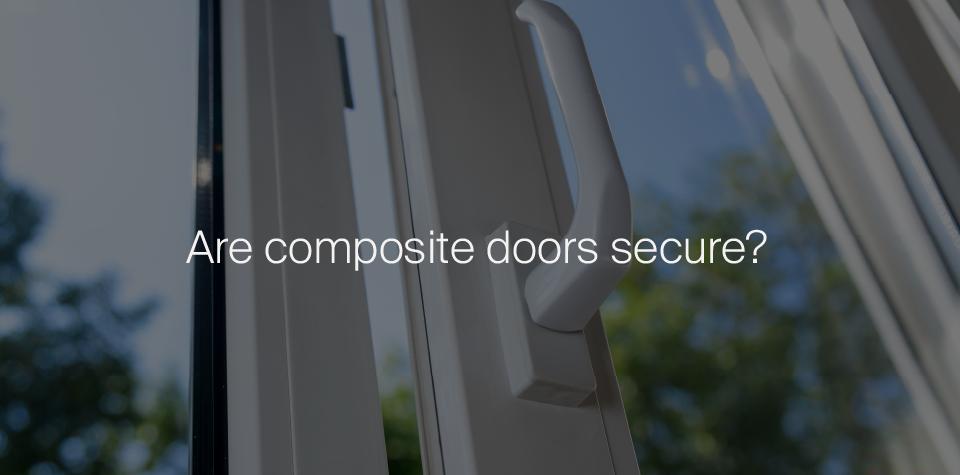How To Fit A Composite Door?
Ideally, you'll want to hire an expert to fit your new composite door, as if they are installed incorrectly then it will cause you more hassle than it was worth.
However, some of you still want to give it a shot, so for this reason, we've chosen to tell you how exactly to fit a composite door on your own.
Remember that you want to benefit from a composite door's full array of features, including enhanced safety through the advanced security your door provides, improved thermal efficiency and decreased energy utility bills - and the added market value the door is likely to bring with it.
Suppose you fit a composite door and frame incorrectly. In that case, you may leave your home vulnerable in several ways, so pay close attention to the steps and tips on composite doors in this article as we guide you through how to replace your old door with a new one.
Design and order fully fitted or supply-only doors using our online builder below:
Check Your New Composite Door And Frame Before Fitting It
Professional installers will always follow a checklist before fitting a new composite door into its door frame. Installers undertake some checks when fitting your composite door and frame.
You'll need to ensure the handles on your composite door and its locking system are working correctly.
Manufacturers expose composite doors to strenuous testing and assessment before they reach customers, so you shouldn't have any problems if you've bought your door from a recognised and reputable dealer.
Check that your composite door is entirely square and true by measuring the diagonal distance across the door from both left to right and right to left and then do the same with the door frame.
These checks should confirm that the door leaf will not be damaged when you use it and that the door will open exactly as it should.
Once you've completed this step, you can be satisfied that you've received your composite door in its intended condition.
Tools You'll Need To Fit Your Composite Door
We suggest you get all the necessary tools at UK Composite Doors before considering fitting your composite door and frame. You'll need the following:
- Spirit level
- Tape measure
- 3 & 4mm Allen key
- Hammer
- Chisel
- Crowbar
- Rubber mallet
- Stanley knife
- Bearing block
- Hammer-action electric drill
- Saw
- Phillips & flat screwdriver
- Wedge or installation packers (aka size wedge packers)
- Foam gun
- Silicone sealant gun
Although dealers often provide specific consumables with your door, you'll need all the tools listed to complete your composite door installation.
Preparation For Fitting
Following specific steps when installing your composite door and frame is essential. Installers, whether professional or not, should take great care to fit composite doors in a manner that will ensure their longevity.
These are the steps to follow:
Step one
Before installing, measure the door and frame from the middle bottom to the centre top. Make sure that your measurements for both the door and frame correlate.
Step two
Be sure to check for any damage to the new door before installation. When you install a door with defects, you increase the risk of further issues in the future. You'll already know the measurement of your door from step one, but it's still important to double-check that all is as it should be by measuring your existing door and comparing the two.
Your new door should be at most 20mm wider and higher, sufficient to square the frame to fit the composite door frame.
Step three
At this stage, remove your existing door leaf and start to read the opening for your new installation. Use your Stanley knife to score the frame's perimeter and, using a bearing block to protect plaster and anything else external around the door if necessary, saw through the frame at an angle.
Don't saw right through, though, as doing so risks exposing and damaging internal structures. You can use a chisel to ease the frame from the wall to allow for a clean cut. Follow the same chisel method to remove the rails at the top and bottom of the doorway.
Step four
Once you've removed the door frame, you'll need to ensure the opening has no leftover filler, plaster, screws or nails, as you'll require a clean area to work.
Be sure to fix any parts of the door opening that are in disrepair, and check that there's a lintel or structure that will keep the weight of the wall above your front doorway.
Step five
Ascertain whether the position of the composite door is suitable for its upcoming use, and double-check that the frame is true and square. No twisting should occur in either the vertical or horizontal plane to prevent outer frame distortion.
You should set the outer door frame as far back as possible to reduce exposure to the weather and fasten it into the brickwork using heavy-duty 8 x 100mm sheathed frame-fixing bolts. Bolt these into the wall to at least 50 millimetres depth and secure them by alternative tightening until the frame pulls square. Don't ever over-tighten your fixings.
Ensure you've bridged your wall cavity and that your damp proofing course (DPC) is adequately covered.
Step six
At this point, you should use some plastic sheeting to cover any floor tiles or other exposed items nearby that you want to protect from dust or debris. Position the composite door's handle to make the upcoming process more manageable.
Use 120mm concrete door screws and your drill to drill through the frame into the brickwork, starting at the bottom and moving upwards. Fix the butt hinges for the door to the outside frame by following the hinging instructions supplied.
You might need to adjust the frame's position to ensure it's true and square while completing the hinge-fixing positions, so use a spirit level to ensure you've carried out the hinge installation evenly. Most installers prefer fixed butt hinges, but you can also use other hinges.
Fitting Composite Doors
Once you've made sure that your door frame is ready to install the new door, here's how to install a composite door:
Step one
Before opening the door, use the 4mm Allen key to tighten the hinge screws to keep them in place once fitted. If you haven't already done so, fit the door handles and screw them in with a screwdriver.
Step two
Pick up your composite door and gently place it upright inside the prepared doorway, keeping it at a 90-degree angle to the entrance and holding it within the frame opening using installation packers to ensure the door doesn't move.
Place the installation packers close to the fixing positions, preventing any distortion of the outer frame while tightening the fixings. If you don't place these packers in the immediate vicinity, it could impact the future functionality of the door.
If possible, try to recruit somebody to help you avoid any safety risk problems and damage to your door.
Install the lock mechanism that aligns between the door and frame, and make certain you can close and lock the door without any problems.
Carefully place the door into the prepared opening. It's advisable to have support from another person for safety and reduce damage to the door.
Step three
Pack the bottom of your door leaf in position with installation packers, which help to set the door straight into the outer frame.
When you've packed your composite door in place, screw the hinge screws into the door on the door-side of the hinge, but leave them loose so you can manoeuvre the door as necessary.
Your composite door should be loose enough to move around.
Make certain that the hinges line up perfectly with the frame and that no more than a 5mm air gap exists on the lock side of your door. Once you've found this ideal position, tighten all of the screws.
Step four
Should any gaps exist around your door frame, fill these spaces with expanding foam using your foam gun, and allow at least 60 minutes as curing time.
Next, cut and seat the top casing and side trim around your composite door.
Clean your newly installed door to remove any leftover residue before you place silicone sealant around the applicable areas on the frame.
Several sealant colours are available at retailers, so use one that will match your door or wall colours for the best effect.
Once the surface is dry, apply the sealant around the frame to prevent air and water infiltration. Finally, seal your door with white silicone sealant to complete the job.
FAQs
Why are composite doors expensive?
Composite doors are more rugged and durable than other types of doors as they utilise many other standout materials in their manufacture and use them most effectively.
Manufacturers fit the doors with reputable lock brands and types for added security, which automatically means they'll cost more.
Are composite doors better than uPVC doors?
Both uPVC and composite doors are adaptable and can be custom-designed to suit your home's style and colour scheme.
Composite doors are much more robust, so they maintain their original look for longer.
In contrast, weather elements may damage uPVC doors, causing them to fade in time, while composite doors don't fade.
Are composite doors burglar-proof?
Composite doors are immensely tough to penetrate, with their inherent strength and robust nature created during their assembly, using several vital elements in their construction.
Do composite doors require maintenance?
Composite doors are easy to keep clean and should always look their best. It would be best if you had only a soft cloth and warm soapy water to wash your front door.
There's no reason to use course materials or to scrub your composite door, as external conditions won't weather it.
Conclusion
Although it is likely that you now know how to fit a composite door and frame and will potentially be in a position to carry out an installation, it might not be the most straightforward task.
You will undoubtedly save yourself a reasonable sum of money if you complete the installation personally, but there is always a chance that it may not work as anticipated.
Composite doors are worth the money, so if you can afford one, dealing with a certified and established installer can save you a lot of stress, and they'll get the job done right the first time.
The odd mishap during a DIY attempt at fitting a composite door and frame (among other items) has cost many homeowners a pretty penny when they need a professional to fix their shoddy work.
For this reason, we would urge you to be prudent before taking on this task yourself.



